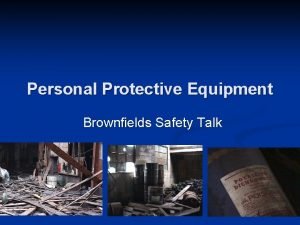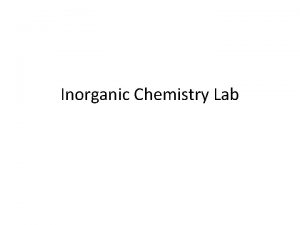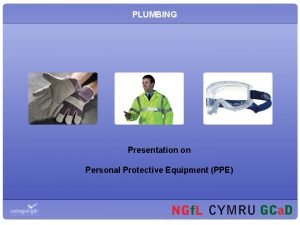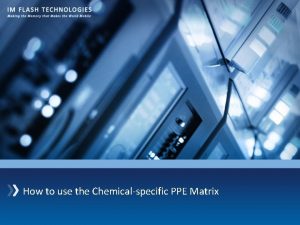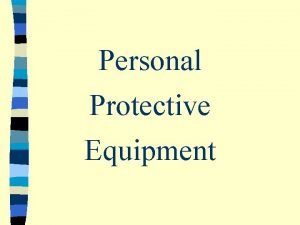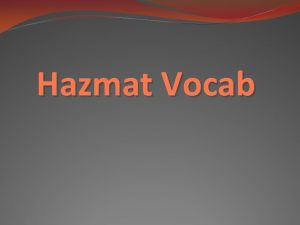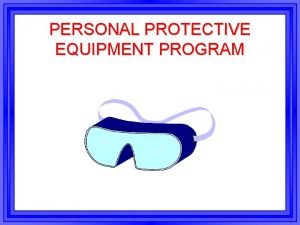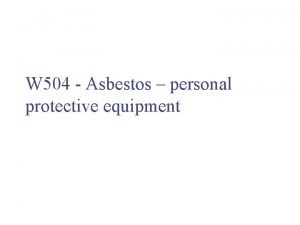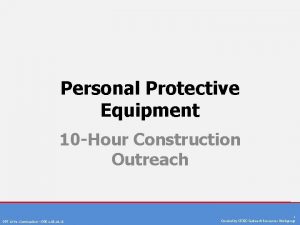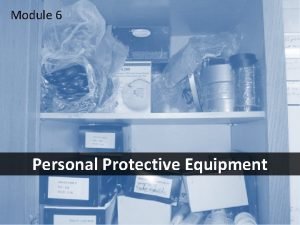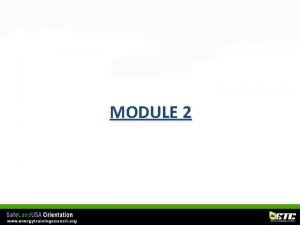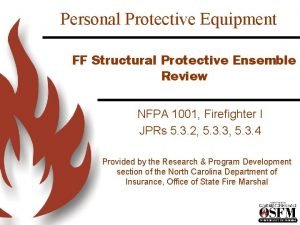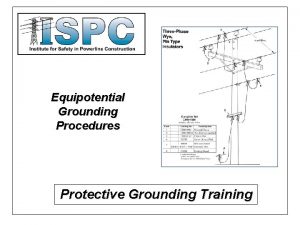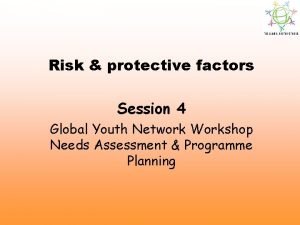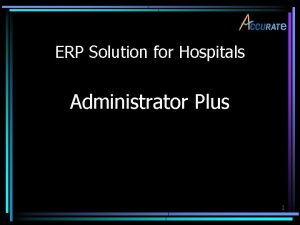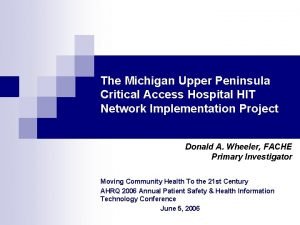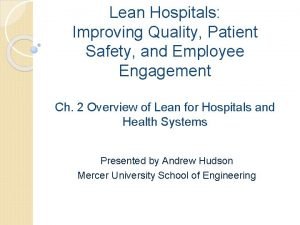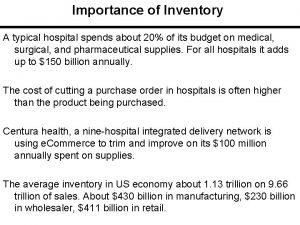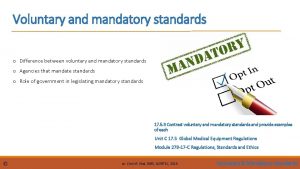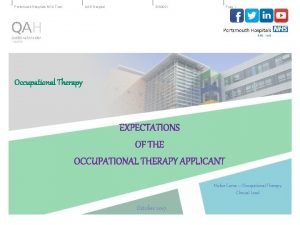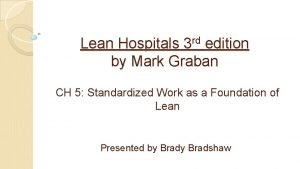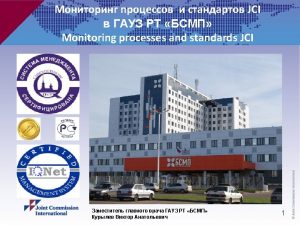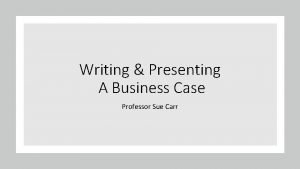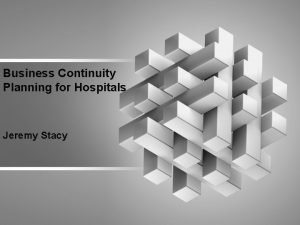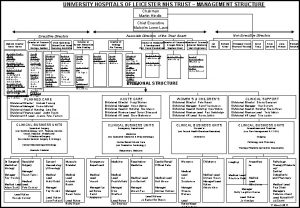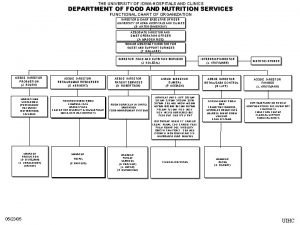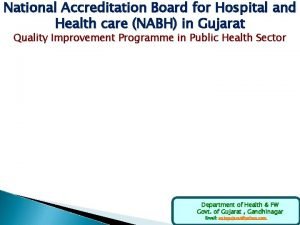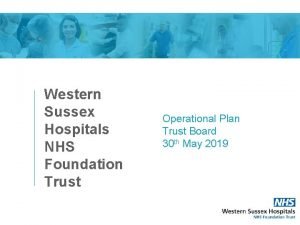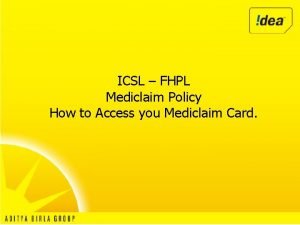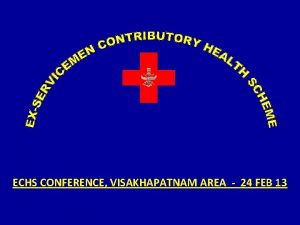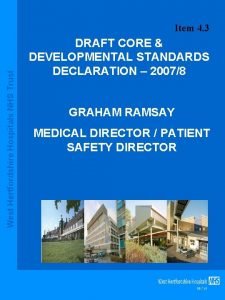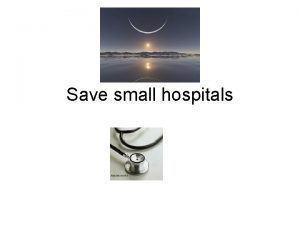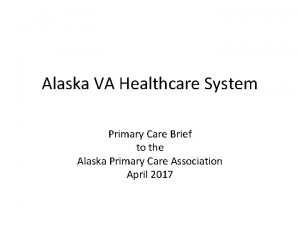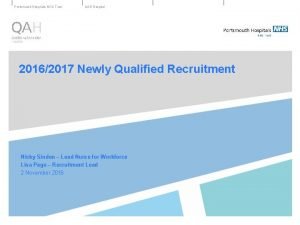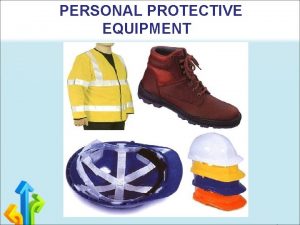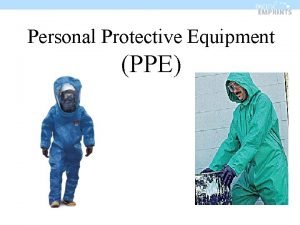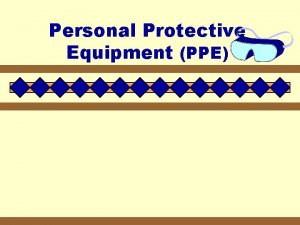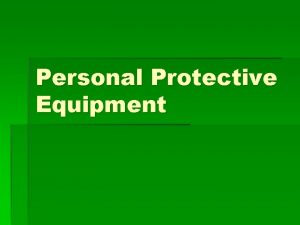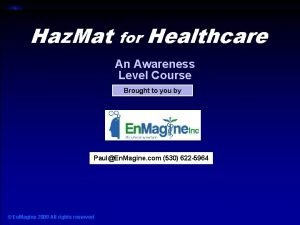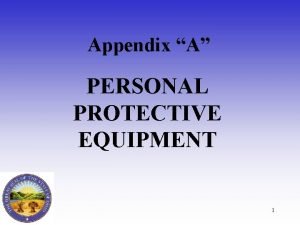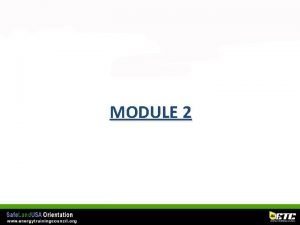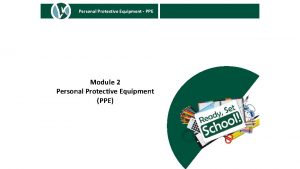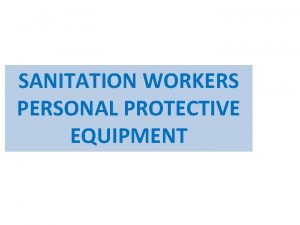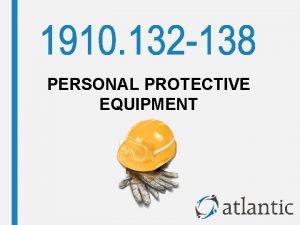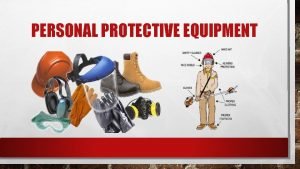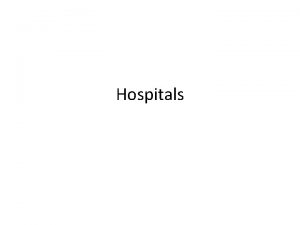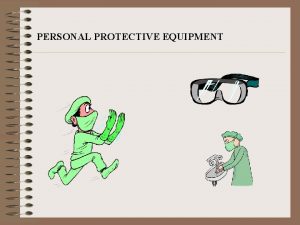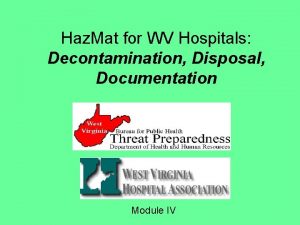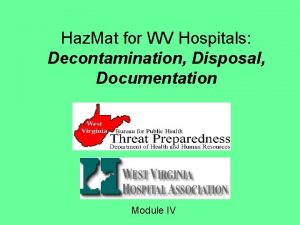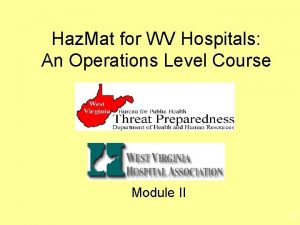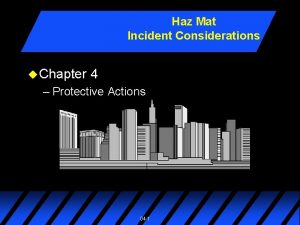Haz Mat for WV Hospitals Personal Protective Equipment












































- Slides: 44

Haz. Mat for WV Hospitals: Personal Protective Equipment Module III

This course was developed by En. Magine, who we wish to gratefully acknowledge. The material has been modified by WV DHHR in cooperation with the West Virginia Hospital Association’s Disaster Preparedness Task Force in the teaching of Hospital Decontamination.

Objectives • Explain the need for, types, selection criteria and limits of protective equipment commonly used in Haz. Mat incidents. • How to select, don, and doff the proper personal protective equipment. • Understanding the hazards and limitations of personal protective equipment

Hazard Control • Engineering Controls • Administrative Controls • Personal Protective Equipment

Protective Equipment • Need for protective equipment • Determine safety of decon personnel via protective equipment levels and needs.

Protective Equipment • Protective Clothing – Proper level • Respiratory Protection – Air Supplied Respirator – Air Purified Respirator • Monitoring Devices

“Let’s talk PPE. ” • PPE is the last and least desirable Hazard Control option after: – Engineering Controls – Administrative Controls • But, in “uncontrolled releases” or for managing contaminated patients it is often the only alternative.

What Level of PPE is needed? • • Level A – Most protective Level B Level C Level D – Least protective

Incomplete Data? • Use highest level of PPE • Level B lowest recommended (on scene) • Level C usually recommended in healthcare…

OSHA Requirements • • Respiratory Protection: Self Contained Breathing Apparatus Supplied Air Respirator for inhalation hazards Air Purified Respirator

Bottom Line • PPE helps to keep you safe (if the right PPE is used in the proper circumstances)

PPE Selection Criteria • Physical form of hazardous material • Degree of hazard • Other – Oxygen level – Degree of unknowns

PPE • The Four levels of PPE • Each has advantages and disadvantages • NO ONE ENSEMBLE IS APPROPRIATE IN ALL CIRCUMSTANCES! • THESE ENSEMBLES DO NOT PROTECT AGAINST FIRE OR EXPLOSION! • These were not developed with healthcare in mind (more on that later).

Level A Skin Respiratory Comments Vapor Protective (also known as gas tight or fully encapsulated) Atmosphere Supplying Respirator (Self contained breathing apparatus [SCBA] or Supplied Air Respirator) Highest level of skin and respiratory protection. Bulky, heavy, and greater potential of heat stress.

Level B Skin Respiratory Comments Liquid Splash Protection, (but suit not fully encapsulated) Atmosphere Supplying Respirator (Self contained breathing apparatus [SCBA] or Supplied Air Respirator) Lower level of skin protection with highest level of respiratory protection.

Level C Skin Respiratory Comments Liquid Splash Protection Air Purifying Respirator Lower level of skin and respiratory protection

Level D Skin Respiratory Comments No chemical protection No respiratory protection Examples include: work uniforms, street clothes, scrubs, and Standard/Universal Precautions (provides minor chemical protection)

“Let’s talk respiratory protection” (Two basic types) • Atmosphere-supplying respirator means a respirator that supplies the respirator user with breathing air from a source independent of the ambient atmosphere, and includes supplied-air respirators (SAR) and self-contained breathing apparatus (SCBA) units. • Air-purifying respirator (APR) means a respirator with an air-purifying filter, cartridge, or canister that removes specific air contaminants by passing ambient air through the air-purifying element.

SCBA Type/Description Advantages Disadvantages Self Contained Breathing Apparatus A compressed air tank containing 30 or 60 minutes (usually effective for less than the rated time) of breathable air. It is mounted on a harness worn on the back with a tight fitting facepiece. Weight ~ 25 -40 lbs An Atmospheresupplying respirator. Greater mobility. Can be used for unknowns, in oxygen deficient atmospheres, and atmospheres above the Immediately Dangerous to Life and Health level. Heavy and bulky (increased overexertion injury hazard). Limited air supply. Users must be fit tested. No facial hair allowed that interferes with mask. High level of training required. High cost.

SAR Type/Description Advantages Disadvantages Supplied Air Respirators (In line system) A hose attaches the user to a hip mounted regulator that is connected by another hose to either a compressed gas tank, compressor, or piped system. The mask can be either a tight fitting mask or loose fitting hood. Reduced potential of overexertion injuries. Can be configured for extended use. Loose fitting hoods do not require fit testing and can be used by persons with beards. Can place multiple responders on one system through use of a manifold system with a variety of air sources. Greater slip, trip and fall hazard from hoses. Limited range.

APR/PAPR Type/Description Advantages Disadvantages Air purifying respirators (APR) A specialized filter attached to either a tight fitting or loose fitting facepiece. Can be of a demand valve or powered type (PAPR). A filtered air source. High mobility PAPRs are generally more comfortable than APR. Often less expensive than atmosphere supplying respirators. Cannot be used for unknown substances, atmospheres below 19. 5% oxygen, materials with poor warning properties, or materials present above the Immediately Dangerous to Life and Health level. Same tight fitting facepiece issues as SCBA. Loose fitting hood can only be used with PAPR. Filters must be specific to type of contaminant present.

For Healthcare “If the agent class for a sudden release cannot be identified, level C PPE with an organic vapor/HEPA filter cartridge respirator is recommended. ” JAMA / volume: 283 (page: 242) Weapons of Mass Destruction Events With Contaminated Casualties: Effective Planning for Health Care Facilities, Anthony G. Macintyre, MD; et al, 2000

Control Zones & PPE Hot (red) zone & Warm (yellow) zone Level C or above is required Cold (green) Zone Level D

Respiratory Protection • One of the major challenges of a hazardous material emergency response program.

Respiratory Protection Key Points • No Respiratory Protection • Air Purifying Respirators (APR) • Atmosphere Supplying Respirators (ASR) – Supplied Air Respirators (SAR) – Self Contained Breathing Apparatus (SCBA) • No Protection • Filters (Many limitations. ) • Provides breathable air.

Components of APRs • Face Piece • Canister (filter) • Blower pack (PAPR)

Respiratory Protection • Respiratory – Appropriate Use and Limitations – If respiratory protection is being used, all participants must be enrolled in a Respiratory protections program that meets the OSHA Respiratory Standard. For example: • Maintenance and care • Fit testing (not required if using loose fitting facepiece. ) • Medical Clearance

PPE Risks and Limits • Penetration • Degradation • Permeation

Type of Gloves for Decon? Butyl Neo- Nitrile prene PVC For hospital decon purposes, nitrile gloves are usually adequate.

Chemical Protective Clothing • Body – PPE • Compatibility • Permeation, Penetration, Degradation

Head, Shoulders, Knees and Toes • • • Head Shoulders Knees Toes And eyes, and ears, and mouth, and nose • Head, Shoulders, Knees and Toes

Extremities • Most likely to come in contact with contaminated patient – Hands • Compatibility (Nitrile appropriate for most chemicals encountered in healthcare) • Double gloving – Feet • Boots, overboots, booties – To tape or not to tape? —Tape!

“The Law of Unintended Consequences” • The primary hazards of wearing PPE: – Heat Stress – Slips / Trips / Falls – Overexertion (strains and sprains)

Medical Complications of PPE Heat Cramps occur in patients who exercise and sweat profusely, and subsequently consumes water without adequate salt. Heat cramps involve the most heavily exercised muscles. Heat Exhaustion presents with minor mental status changes, dizziness, nausea, headache, tachycardia and mild hypotension. Temperatures is less than 103º F.

Medical Complications of PPE Heat Stroke occurs when the patient's thermoregulatory mechanisms break down. Body temperature is elevated to extreme levels (>1040) resulting in multi-system tissue damage, including altered mental status and physiological collapse. Patients with heat stroke have hot, dry skin; however, up to 50% of patient's with exertional heat stroke may exhibit persistent sweating. Therefore, the presence of sweating does not preclude the diagnosis. This is a True Medical Emergency! If you do not recognize and correct this immediately, the person will die.

When to discontinue work in PPE due to Heat Stress • Symptoms of sudden, severe fatigue, nausea, dizziness, or lightheadedness are warning signs to doff your PPE immediately.

Personnel Monitoring and Medical Surveillance • Baseline vital signs- pulse, temperature, (BP, weight) • Exit • Medical Surveillance (Employee Health Services) • *Required for Levels A, B • Recommended for Levels C, D

Hand Signals

Suit Log Times

Monitoring Devices • Confined Space Meters – Oxygen – Combustible Gas – Carbon Monoxide – Hydrogen Sulfide • Colorimetric Tubes • p. H Paper • Rad Meters

Summary of Module III - PPE • Four Levels of PPE: A, B, C, D • Different Methods of Respiratory Protection • Complications of PPE • Suit Times • Monitoring Devices

Questions?

PPE Demo

Donning Sequence • • Lower suit Boots Inner gloves PAPR Upper suit with hood Outer gloves Tape all seams, test air seal
 Personal protective equipment safety talk
Personal protective equipment safety talk Chemistry lab ppe
Chemistry lab ppe Plumbing presentation
Plumbing presentation Personal protective equipment matrix
Personal protective equipment matrix Objectives of ppe
Objectives of ppe Personal protective equipment vocabulary
Personal protective equipment vocabulary Personal protective equipment program
Personal protective equipment program Asbestos personal protective equipment
Asbestos personal protective equipment Personal protective equipment for farmers
Personal protective equipment for farmers Summary of personal protective equipment
Summary of personal protective equipment Personal protective equipment ppt
Personal protective equipment ppt Ppe plumbing
Ppe plumbing A worker mixing chemicals must not wear
A worker mixing chemicals must not wear Personal protective equipment pictograms
Personal protective equipment pictograms Ppe in smaw
Ppe in smaw Ppe for contact precautions
Ppe for contact precautions Mat för idrottare
Mat för idrottare Special protective equipment used in firefighting except
Special protective equipment used in firefighting except Equal potential grounding
Equal potential grounding Personal protective factor
Personal protective factor Administrator plus hospital software
Administrator plus hospital software Use of computer at hospital
Use of computer at hospital Mghs wheelers
Mghs wheelers Lean hospitals
Lean hospitals Louisiana department of health and hospitals licensing
Louisiana department of health and hospitals licensing Inventory cycle time
Inventory cycle time Keshvendra kumar ias
Keshvendra kumar ias Dnv vs jcaho
Dnv vs jcaho University hospitals coventry and warwickshire nhs trust
University hospitals coventry and warwickshire nhs trust Difference between voluntary and mandatory
Difference between voluntary and mandatory Portsmouth hospitals nhs trust jobs
Portsmouth hospitals nhs trust jobs Lean hospitals mark graban
Lean hospitals mark graban Ipsg 1-6
Ipsg 1-6 Dr sue carr
Dr sue carr Bcp for hospitals
Bcp for hospitals Uhl management structure
Uhl management structure University of iowa hospitals and clinics
University of iowa hospitals and clinics National accreditation board for hospitals
National accreditation board for hospitals Process governance
Process governance How to login fhpl
How to login fhpl Echs empanelled hospitals in visakhapatnam
Echs empanelled hospitals in visakhapatnam Bed management in hospitals
Bed management in hospitals Example for strength and weakness
Example for strength and weakness Va hospital fairbanks alaska
Va hospital fairbanks alaska Portsmouth hospitals nhs trust values
Portsmouth hospitals nhs trust values
